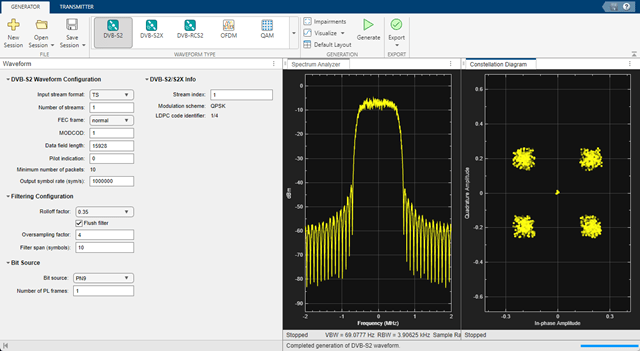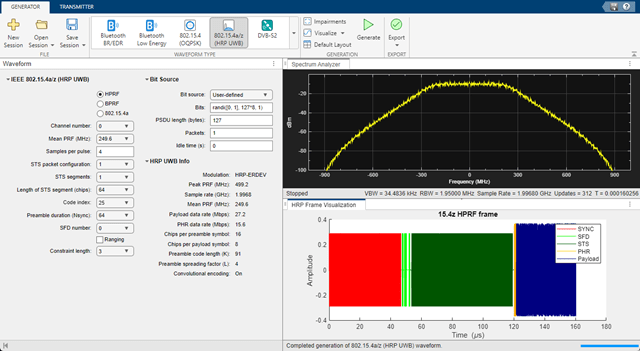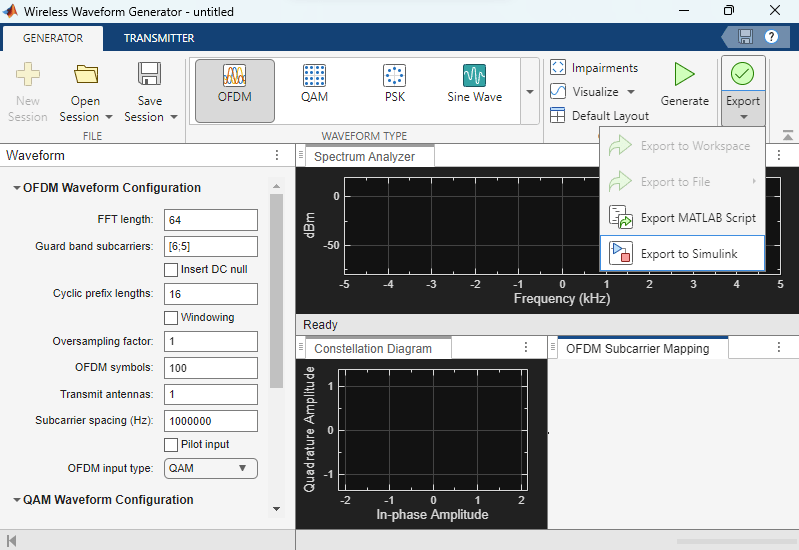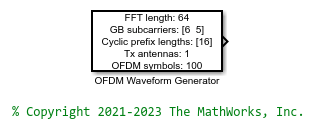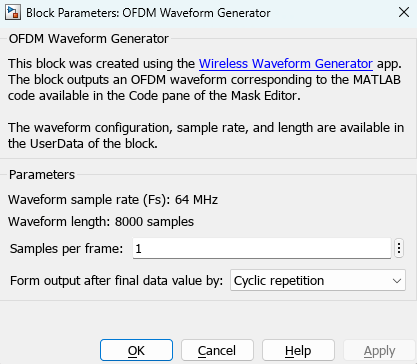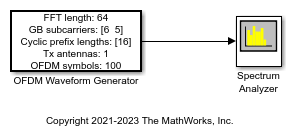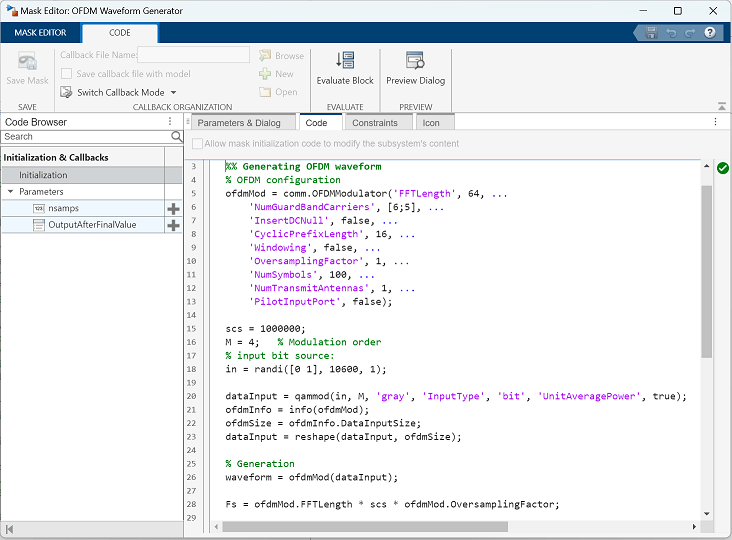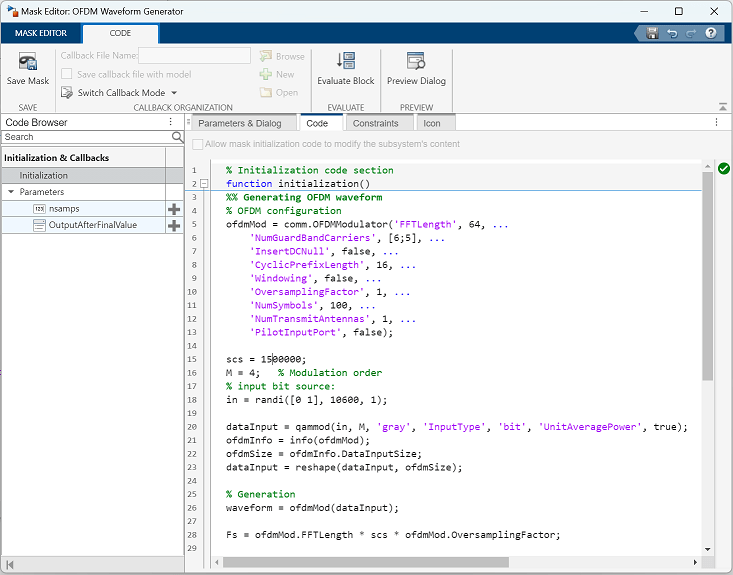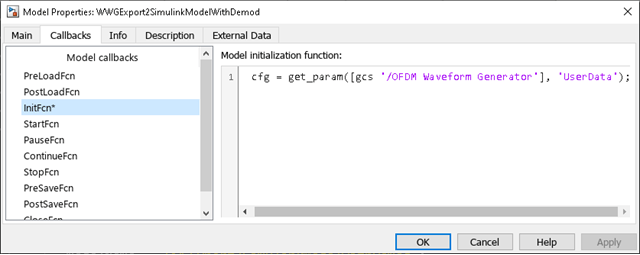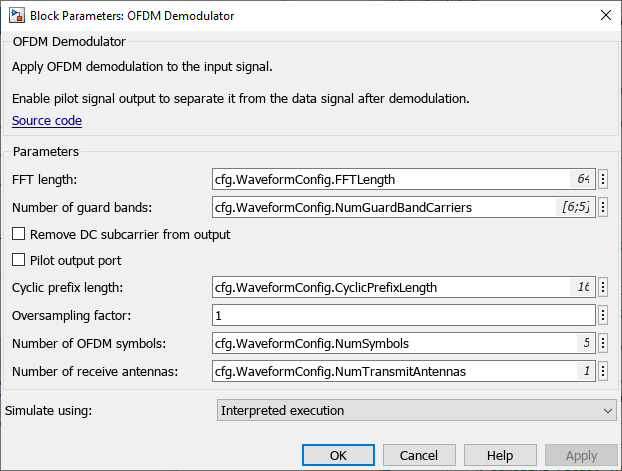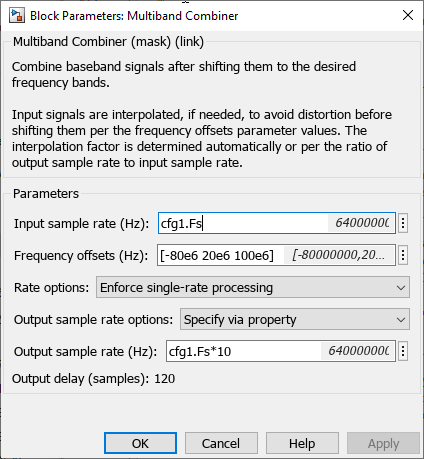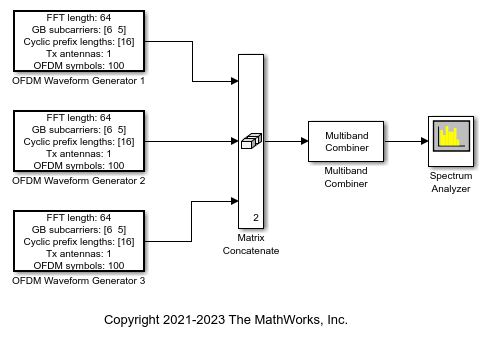Wireless Waveform Generator
Create, impair, visualize, and export modulated waveforms
Description
The Wireless Waveform Generator app enables you to create, impair, visualize, and export modulated waveforms.
Using the app, you can:
Generate custom OFDM, QAM, and PSK modulated waveforms.
Generate sine wave test waveforms.
Generate 5G NR uplink and downlink carrier waveforms. This feature requires 5G Toolbox. For more information, see the 5G Waveform Generator (5G Toolbox) app reference page.
Generate LTE modulated waveforms. This feature requires the LTE Toolbox. For more information, see the LTE Waveform Generator (LTE Toolbox) app reference page.
Generate WLAN (802.11™) modulated waveforms. This feature requires the WLAN Toolbox. For more information, see the WLAN Waveform Generator (WLAN Toolbox) app reference page.
Generate Bluetooth modulated waveforms. This feature requires the Bluetooth Toolbox. For more information, see the Bluetooth LE Waveform Generator (Bluetooth Toolbox) and Bluetooth BR/EDR Waveform Generator (Bluetooth Toolbox) app reference pages.
Generate DVB-S2, DVB-S2X, and DVB-RCS2 waveforms. This feature requires the Satellite Communications Toolbox. For more information, see the Satellite Waveform Generator (Satellite Communications Toolbox) app reference page.
Generate radar waveforms. This feature requires Phased Array System Toolbox.
Generate ZigBee® and UWB (IEEE® 802.15.4z) modulated waveforms.
Export the waveform to your workspace or to a
.mat,.bb, or.txtfile.Export waveform generation parameters to an executable MATLAB® script or a Simulink® block.
Use the exported script to generate your waveform without the app from the command line.
Use the exported block as a waveform source in a Simulink model. For more information, see Waveform From Wireless Waveform Generator App.
Visualize the waveform in constellation diagram, spectrum analyzer, OFDM grid, and time scope plots.
Distort the waveform by adding RF impairments, such as AWGN, phase offset, frequency offset, DC offset, IQ imbalance, and memoryless cubic nonlinearity.
Generate a waveform that you can transmit using a connected signal generator or software-defined radio (SDR).
To transmit a waveform by using a signal generator, use the Instrument Control Toolbox software and connect a supported signal generator to your computer. For more information, see Transmit Using Lab Signal Generator Instrument.
To transmit your waveforms over the air by using an NI™ USRP™ radio, use the Wireless Testbench™ software and connect a supported radio to your computer. For more information, see Transmit Signals Using Wireless Testbench Baseband Transmitter.
To transmit a waveform by using a supported SDR (ADALM-Pluto, NI USRP, or Xilinx® Zynq®-based radio), install the add-on that corresponds to your radio hardware and connect your SDR to your computer. For more information, see Transmit Using SDR.
For more information, see Create Waveforms Using Wireless Waveform Generator App.
Open the Wireless Waveform Generator App
MATLAB Toolstrip: On the Apps tab, under Signal
Processing and Communications, click the app icon. ![]()
MATLAB Command Prompt: Enter wirelessWaveformGenerator.
Examples
Limitations
In MATLAB Online™, the Wireless Waveform Generator app does not support signal transmission with SDR devices or test instruments.
Version History
Introduced in R2018bSee Also
Apps
Functions
rfsiggen(Instrument Control Toolbox)
Blocks
Topics
- Create Waveforms Using Wireless Waveform Generator App
- Quick-Control RF Signal Generator Requirements (Instrument Control Toolbox)


![Wireless Waveform Generator app display of OFDM waveform with DC null and guard band subcarriers set to [20;19].](wwg-ofdm-dcnull-adjust-gbsc.png)





